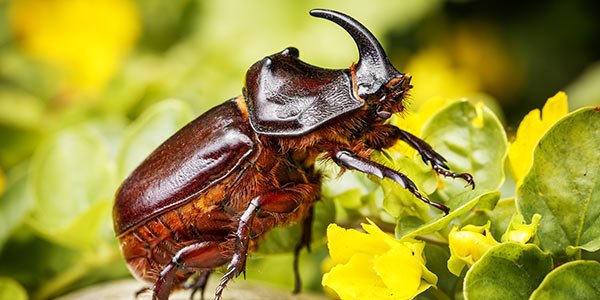Introduction
In the vast realm of biological mysteries, few creatures evoke as much curiosity as sericomorphs. These enigmatic beings have long baffled scientists and explorers alike. With their unique evolutionary traits and adaptive mechanisms, they remain one of the most intriguing subjects in the study of life on Earth. But what exactly are sericomorphs? Where do they come from, and what makes them so unique? This article will delve into their origins, habitat, physiology, and the scientific significance of these mysterious creatures.
What Are Sericomorphs?
Sericomorphs are a rare and distinct class of organisms known for their silk-like exoskeletons and extraordinary regenerative abilities. These creatures are believed to have evolved millions of years ago, adapting to extreme environments. Their name derives from the Latin words serico (silk) and morph (form), referencing their unique fibrous structures.
The Evolutionary Origins of Sericomorphs
The evolutionary history of sericomorphs remains a subject of intense research. Fossil evidence suggests that they may have originated during the late Paleozoic era. Some theories propose that they evolved from arthropod-like ancestors, while others suggest a closer relation to mollusks due to their soft-bodied characteristics hidden beneath a silk-like outer layer.
Key Evolutionary Milestones
- Emergence in extreme environments (deep-sea hydrothermal vents, subterranean caves)
- Development of silk-excreting glands for protection and mobility
- Adaptation to bioluminescence for communication and camouflage
Habitat and Distribution
Sericomorphs have been discovered in some of the most remote and harshest environments on Earth. Their ability to survive in diverse conditions is a testament to their remarkable adaptability.
Primary Habitats
- Deep-sea trenches (Mariana Trench, Mid-Atlantic Ridge)
- Subterranean cave systems (Central American limestone caves)
- Arctic and Antarctic sub-glacial lakes
Adaptations for Survival
- Tolerance to extreme pressure and temperatures
- Ability to synthesize oxygen from water through specialized gill-like structures
- Silk-based webbing used for both shelter and predation
Physical Characteristics of Sericomorphs
The physiology of sericomorphs is unlike any known species. Their bodies are covered in a silk-like exoskeleton that provides both protection and sensory perception.
Key Features
- Silk-like Exoskeleton: Composed of protein fibers similar to spider silk, offering durability and flexibility
- Bioluminescence: Used for communication and predation avoidance
- Regenerative Abilities: Can regrow lost appendages within days
- Multiple Limbs: Often possessing 6-8 limbs with retractable claws for gripping surfaces
Sericomorph Behavior and Communication
Understanding sericomorph behavior has been challenging due to their elusive nature. However, recent studies suggest that they exhibit complex social structures and communication methods.
Social Structure
- Solitary Hunters: Many species are solitary and rely on stealth
- Colony-Based Species: Some form colonies, weaving massive silk nests in deep-sea ecosystems
Communication Methods
- Bioluminescent Signaling: Used to warn, attract mates, or confuse predators
- Vibrational Signals: Produced through silk strands to relay messages within colonies
The Role of Sericomorphs in the Ecosystem
Sericomorphs play a crucial role in their respective ecosystems, contributing to both the food chain and environmental balance.
Ecological Contributions
- Regulating Prey Populations: Keeping certain species in check prevents overpopulation
- Nutrient Cycling: Decomposing organic matter and enriching deep-sea ecosystems
- Symbiotic Relationships: Some sericomorphs coexist with bacteria, aiding in toxin breakdown
Scientific Research and Future Prospects
Despite their mysterious nature, sericomorphs have fascinated researchers worldwide. The study of their unique properties has the potential to revolutionize multiple scientific fields.
Ongoing Research Areas
- Biomimicry Applications: Studying silk structures for industrial use
- Medical Research: Regenerative properties could advance human medicine
- Deep-Sea Exploration: Understanding survival in extreme environments
FAQs
What do sericomorphs eat?
Sericomorphs primarily consume small marine organisms, fungi, and decaying organic matter. Some species are also known to be opportunistic scavengers.
Are sericomorphs dangerous to humans?
No confirmed cases of sericomorphs harming humans exist, but caution is advised when encountering unfamiliar deep-sea creatures.
How do sericomorphs reproduce?
Reproduction methods vary; some lay silk-encased eggs, while others reproduce asexually through fragmentation.
Can sericomorph silk be used in industries?
Scientists are exploring sericomorph silk for potential applications in bioengineering and material sciences due to its durability and flexibility.
Do sericomorphs have natural predators?
Due to their remote habitats, sericomorphs have few natural predators, though some deep-sea species may fall prey to larger marine organisms.
Where can one see sericomorphs?
Sericomorphs are rarely seen by humans but have been observed in deep-sea submersible explorations and remote cave systems.
Conclusion
Sericomorphs remain one of the most intriguing and least understood life forms on our planet. Their unique physiology, adaptive capabilities, and ecological significance make them a subject of ongoing scientific interest. As technology advances, we may soon unlock even more secrets about these fascinating creatures. Until then, sericomorphs will continue to captivate our imagination and expand the boundaries of biological discovery.
